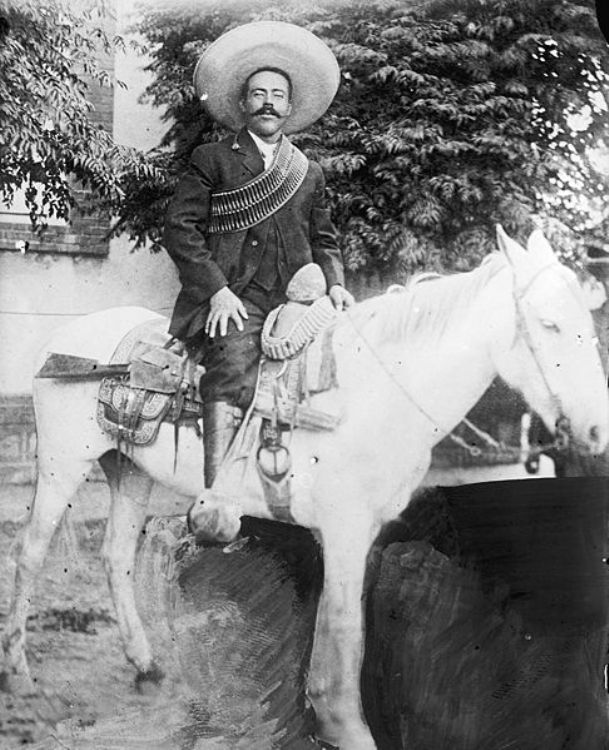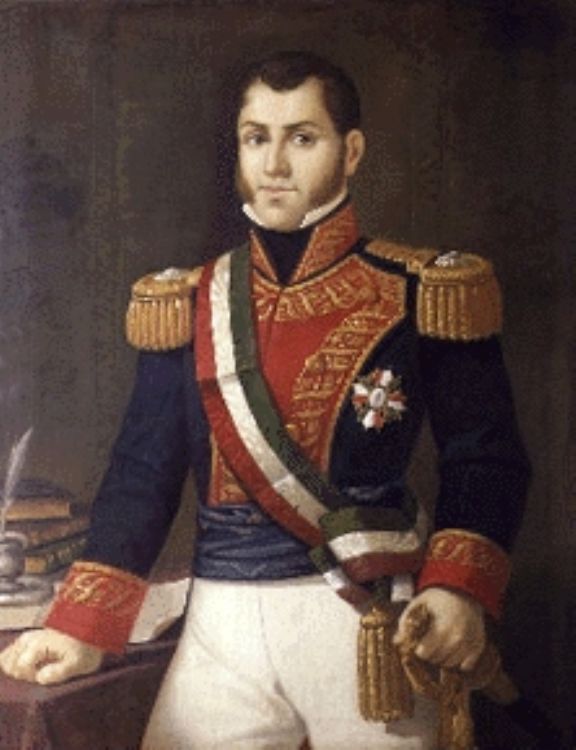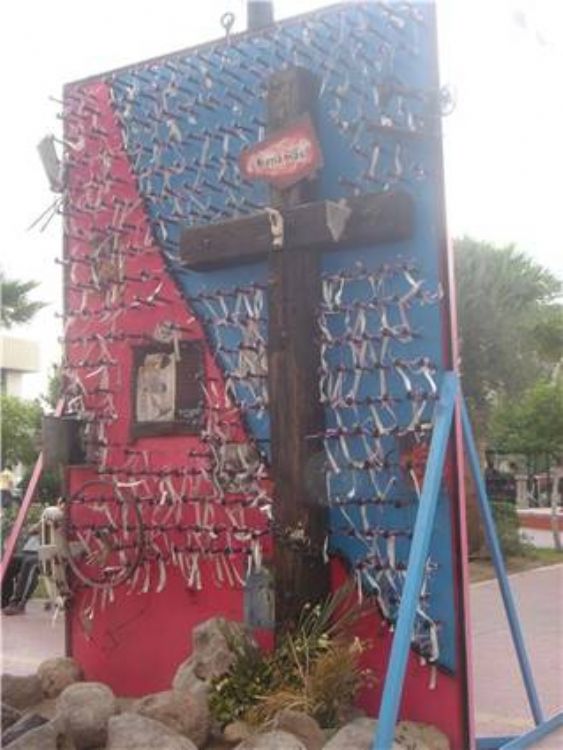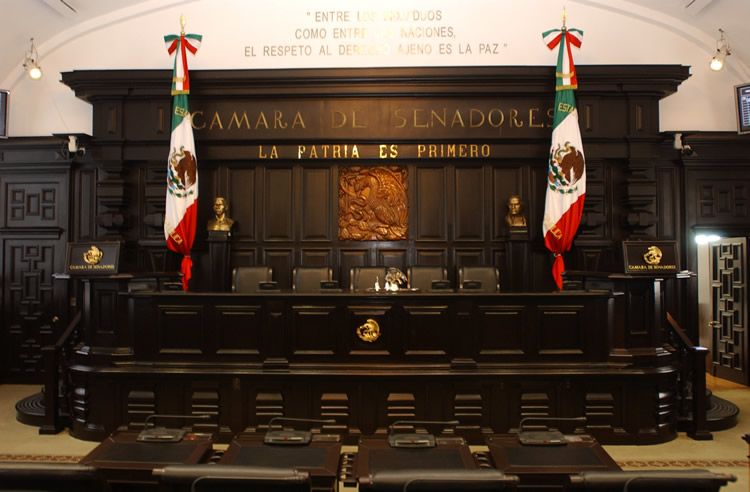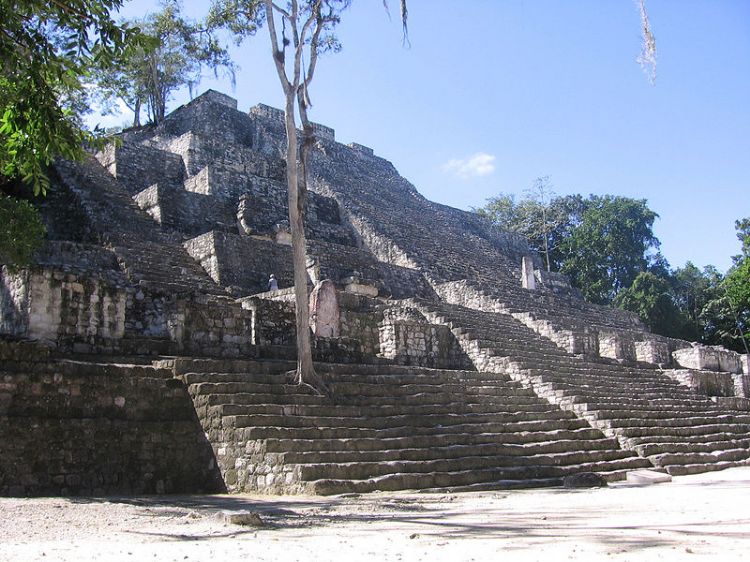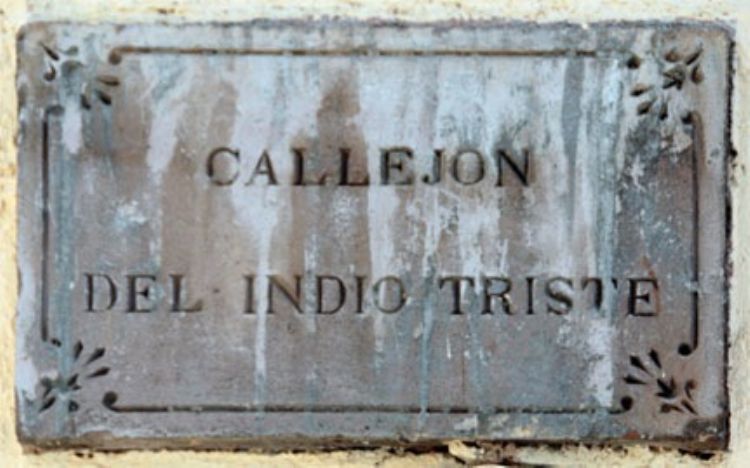Cobá, Archaeological Site of the Mayan Empire
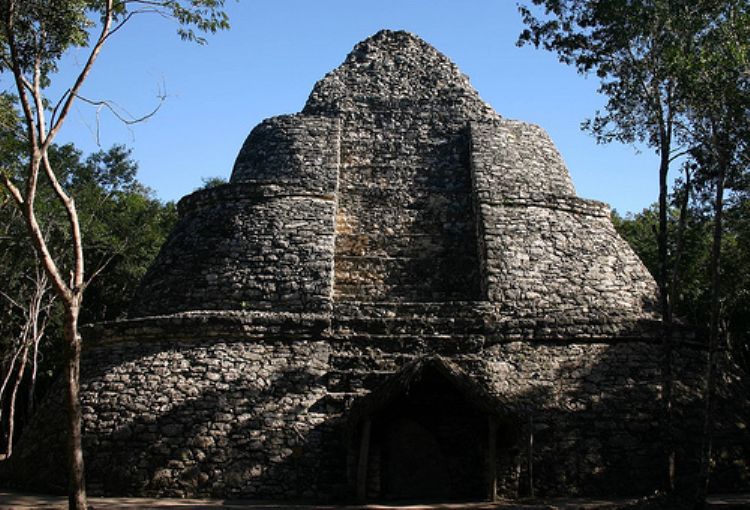
Cobá was a city of the Maya Empire, located within the current territory of the State of Quintana Roo. It is inside the archeological zone of Tulum, near the city of the same name.
This city was constructed during the classic period of Maya civilization, approximately between the years 500 and 900 of our era. During its peak, it had 50,000 residents over an extension of eighty square kilometers. Among its temples survives the pyramid of Nohoch Mul measuring 42 meters in height. Its buildings probably continued to be built and repaired up to the arrival of the first Spanish conquistadors.
Some colonial texts mention it as Kinchil Cobá, referring to the Maya god of the sun. Its name is composed by Cob which means muddy and Ha meaning water, calling it âplace of muddy waterâ, in reference to the lakes around which this city was built.
Amid a dense diversity of flora and fauna, it was difficult to reach this archeological site, thus the National Institute of Anthropology and History constructed paths for researchers and visitors; achieving to turn these ruins into one of the regionâs main tourist attractions. For its historic importance and natural beauty, Cobá is a very interesting place for those who wish to know the archaeological sites of Quintana Roo.
Although Cobá started to be inhabited in 200 B.C., its notable demographic, social and political growth started in 100 A.D. up to becoming one of the largest and most powerful cities in the north of Yucatan. Between the years 200 and 600 A.D., Cobá controlled this territory, dominating the north of current Quintana Roo as a commercial exchange route, including the port of Xel.Há. This power structure changed with the appearance of Chichén Itzá in the sociopolitical panorama of the peninsula, obligating Cobá to reorder its territorial domains and in the year 1000 A.D. lost its political importance. It is the most important settlement in the northeast of the Yucatan peninsula. Its size can only be compared to that of its enemy, Chichén Itzá.
A network of 45 paths (sacbeob) communicates the architectural sets to each others and other communities that were once under its domain. Included within this complex system is a 100 kilometer path uniting the archaeological site of Cobá with that of Yaxuná in Yucatan.
Traveling from the city of Cancun, on federal highway 180 Cancun- Chetumal and 128 kilometers to the south of Cancun, is the town of Tulum, from there you take a 47 kilometer detour leading to the town and archaeological site of Cobá.
Artículo Producido por el Equipo Editorial Explorando México.
Copyright Explorando México, Todos los Derechos Reservados.
Foto: Alaskan Dude

